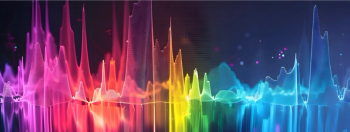
Call for Papers: August 2014 Supplement: FT-IR Technology for Today's Spectroscopists
Spectroscopy magazine is seeking contributed manuscripts for its August 2014 supplement on Fourier transform-infrared (FT-IR) spectroscopy. This supplement will include explanations of fundamentals of FT-IR spectroscopy, along with discussions of recent advances in the technology and applications-oriented articles.
Spectroscopy magazine is seeking contributed manuscripts for its August 2014 supplement on Fourier transform-infrared (FT-IR) spectroscopy. This supplement will include explanations of fundamentals of FT-IR spectroscopy, along with discussions of recent advances in the technology and applications-oriented articles.
Links to our past supplements appear below:
Manuscripts should be approximately 2,000-2,500 words long, plus figures and tables as needed, including an abstract of approximately 150-200 words. Applications articles should follow a standard experimental article format. Figures and tables, along with their captions, should appear at the end of the manuscript, and figures also must be sent as separate files, preferably in JPG, TIF, PNG, or XLS format. References should be called out using numbers in parentheses and listed at the end of the manuscript in numerical order.
Submissions from equipment manufacturers will be considered but must be devoid of promotional content; discussions of new technology should not focus on a specific manufacturer’s instrument.
Complete author guidelines are available at the following link:
Due date for abstract submission: May 19, 2014
Due date for completed articles: June 27, 2014
Suggested article length: ~2000–2500 words, plus figures and tables as needed
Where to submit: Send all proposals and completed articles to Editor Laura Bush, at
Newsletter
Get essential updates on the latest spectroscopy technologies, regulatory standards, and best practices—subscribe today to Spectroscopy.





